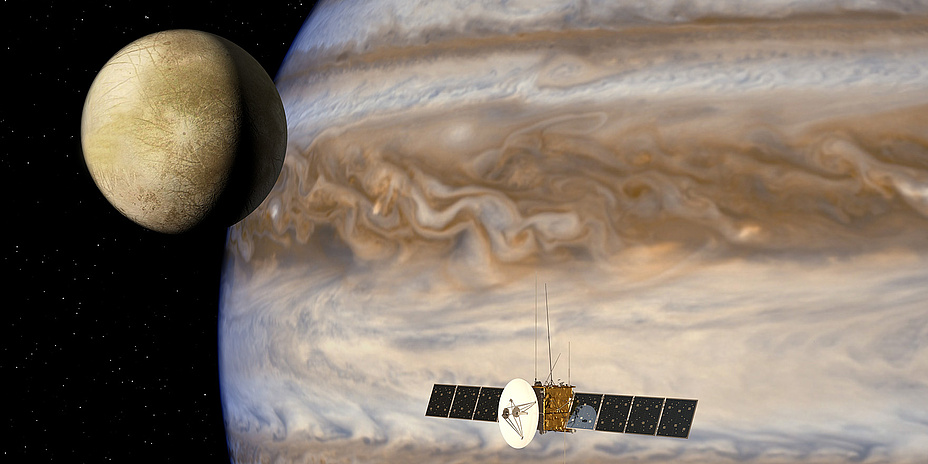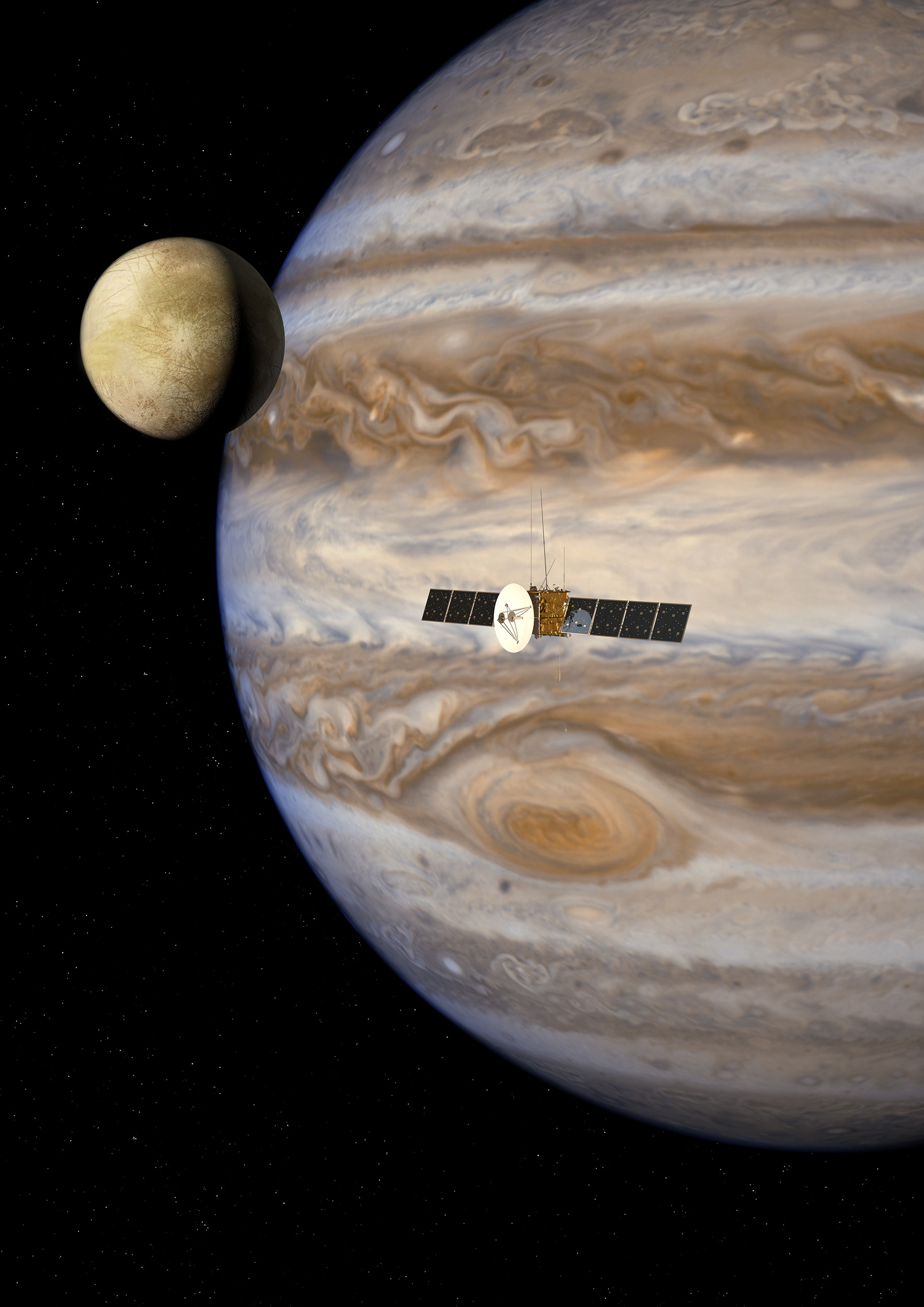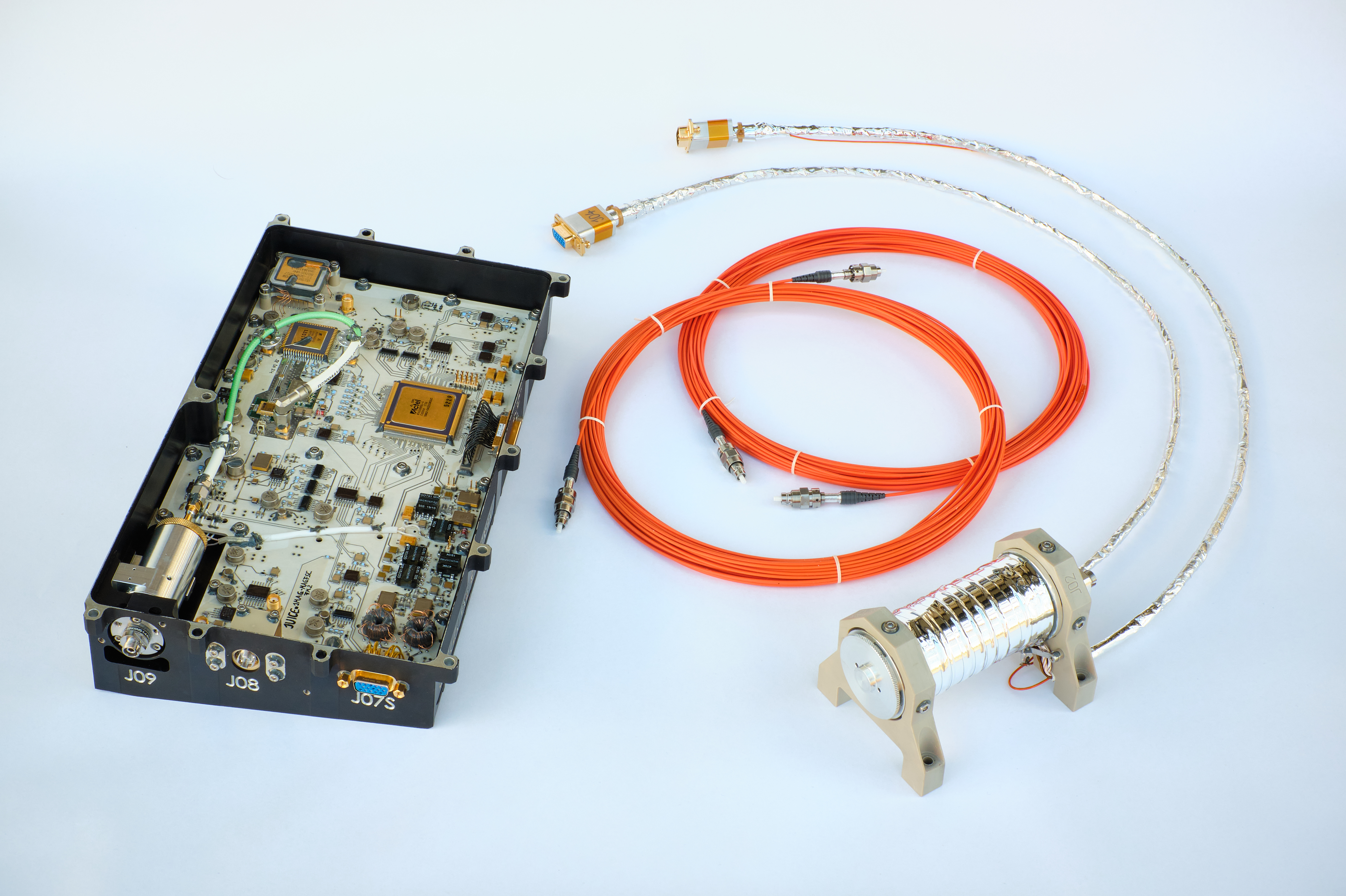Jupiter-Magnetometer leaves Graz

Photos for download at the end of the text
JUICE (JUpiter ICy moons Explorer) is the European Space Agency’s (ESA) first mission exploring the outermost solar system. Researchers assume that Jupiter's icy moons Europa, Ganymede and Callisto are home to oceans beneath their surfaces and now want to investigate these potential habitats more closely. The Graz instrument is part of a magnetic sensor system that was built together with Imperial College London and TU Braunschweig for exactly this scientific question.
45,000 working ours from Graz
"During the development period of more than five years 21 technicians and physicists have invested more than 45,000 working hours in the timely completion of the sensor unit, which is unique in the world," says Werner Magnes, Deputy Director and Head of the Magnetometer Group at the ÖAW Institute, emphasizing the excellent teamwork between the two Graz institutions. "In recent years, we have gone through many ups and downs, mastered a number of technical difficulties and tested many new design details for the inhospitable Jupiter environment," adds Roland Lammegger, project manager at Graz University of Technology.
Beginning of a 12-year journey
The delivery of the flight instrument to the project partner in London marked the beginning of a 12-year journey. After several test stations in Europe, the satellite launch in French Guiana in June 2022 and numerous planetary fly-bys, the Graz magnetometer will reach the Jovian system in January 2030, before finally entering the orbit of Jupiter's moon Ganymede in September 2032.
Further information about the JUICE mission and the reference magnetometer made in Graz can be found here on the website of the Austrian Academy of Sciences as well as in the press release of Graz University of Technology on the project start 2015 (German only).
Kontakt
Roland LAMMEGGER
Dipl.-Ing. Dr.techn.
TU Graz | Institute of Experimental Physics
M: +43 664 73810762
roland.lammegger@tugraz.at
Werner MAGNES
Dipl.-Ing. Dr.techn.
ÖAW| Space Research Institute (IWF)
M: +43 699 1039 0604
werner.magnes@oeaw.ac.at






